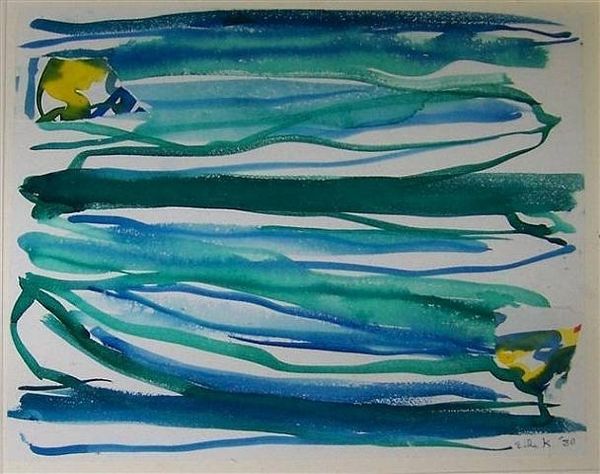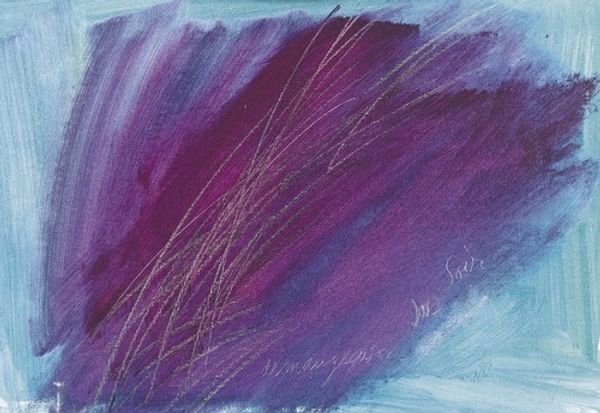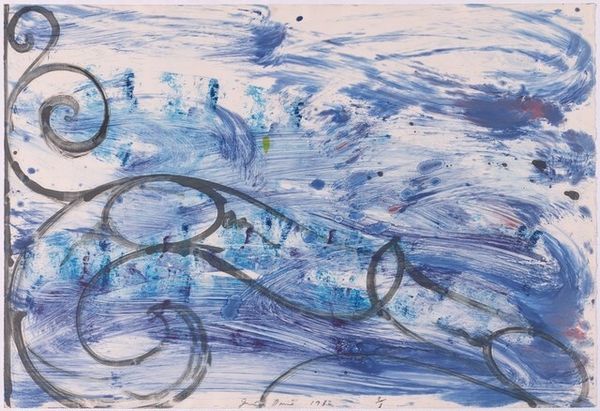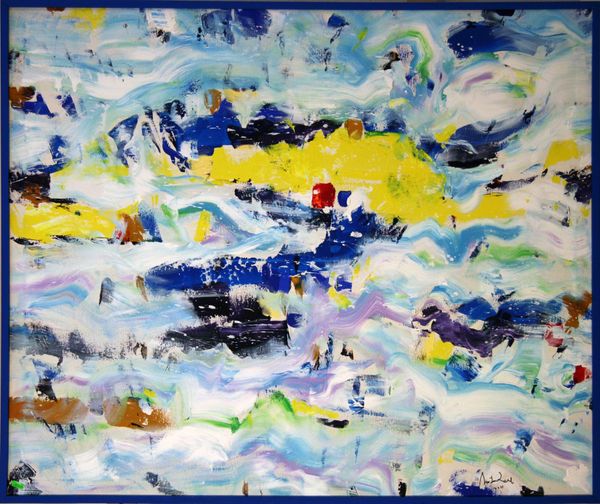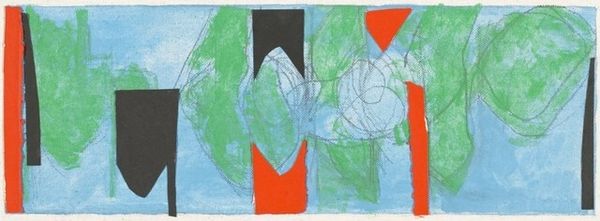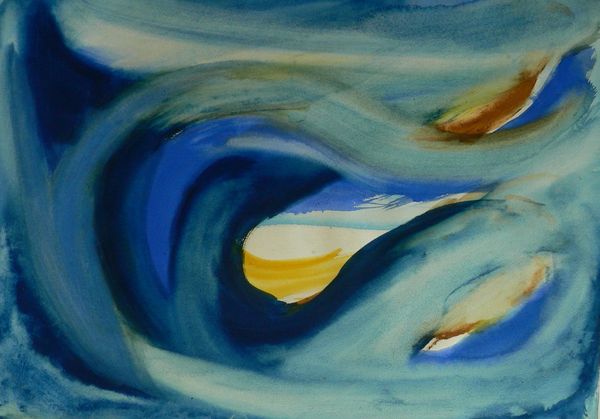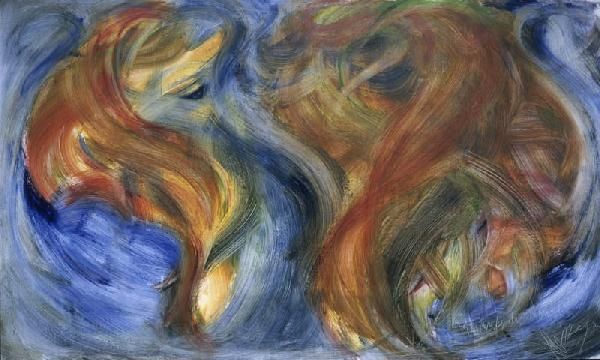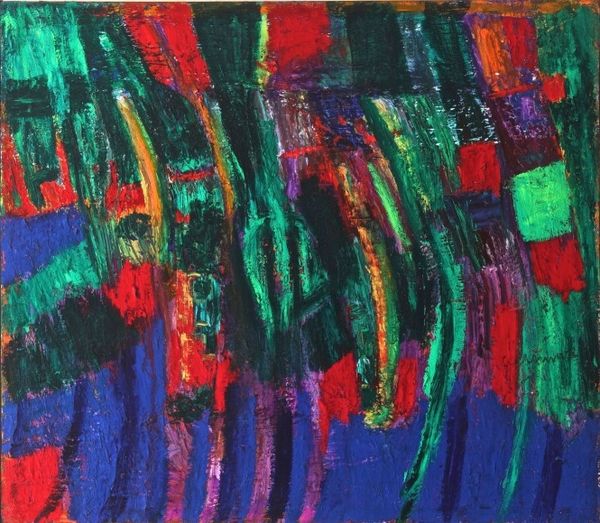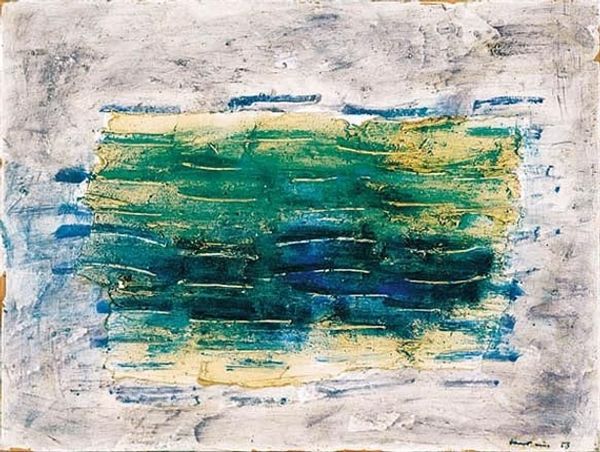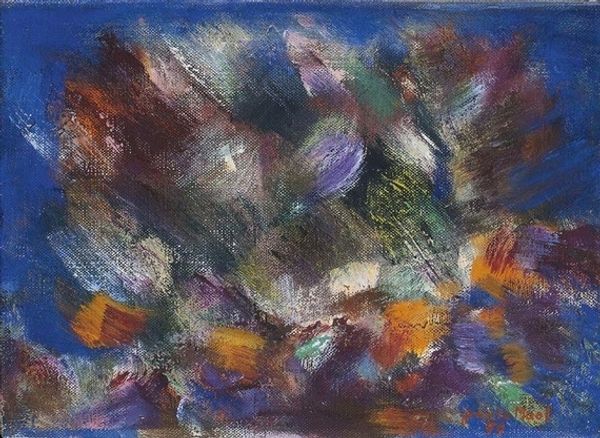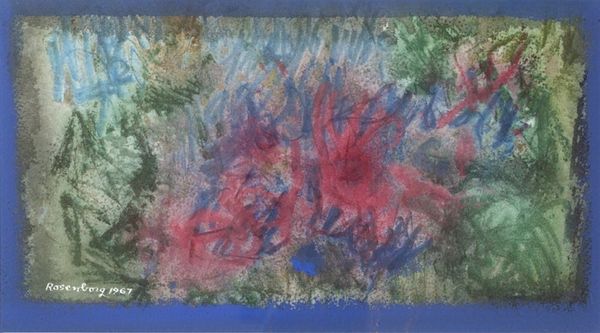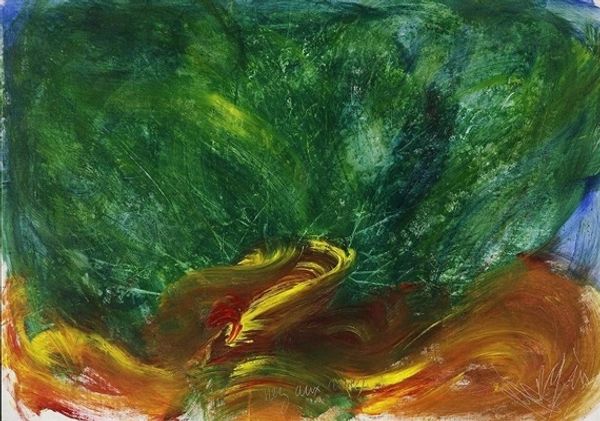
Copyright: Jean Messagier,Fair Use
Editor: So, here we have Jean Messagier's "Ciel deplisseur" from 1971, done with mixed media. The bold blues and greens really evoke a sense of natural, raw energy, almost like a storm brewing. What do you make of the visual impact, especially considering its context in the art world at the time? Curator: The interesting thing here is how Messagier positions himself in relation to the dominant movements. He's working in 1971, after Abstract Expressionism has become thoroughly institutionalized. He seems to borrow its gestures, its scale, its "all-overness," but it stops short of the angst and heroism you might see in, say, Pollock or Newman. It is much softer. Do you see the post-impressionist touches here, the reference to landscape? Editor: Yes, I can see that connection! It feels like a reimagining of landscape painting through a more abstract lens, especially in his choice of nature-inspired color and composition. It's fascinating how it hints at nature without explicitly depicting it. It invites contemplation, not immediate recognition, and the artist uses sweeping lines in the mixed media to create texture. How do you feel the historical and political environment of the '70s shaped artwork that moved in this more abstract direction? Curator: Well, you have the socio-political turmoil of the late '60s bleeding into the '70s, disillusionment with grand narratives. There’s a turn inward, toward subjective experience, and I wonder if abstraction like this offers a retreat from direct political engagement but perhaps registers a kind of… unease? Messagier presents a dissolving or “deplisseur” sky. He uses art to depict nature’s mutability, aligning with an anti-establishment tone. It critiques fixed meanings but leaves space for viewer introspection. Editor: That makes a lot of sense. The idea of "unease" resonates – like nature's instability becomes a canvas for broader social anxieties. Thanks! Curator: My pleasure. The conversation sheds new light on its significance and its relationship with cultural narratives.
Comments
No comments
Be the first to comment and join the conversation on the ultimate creative platform.
